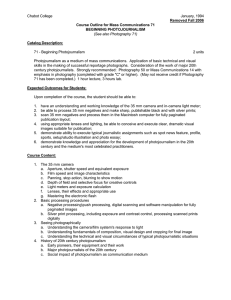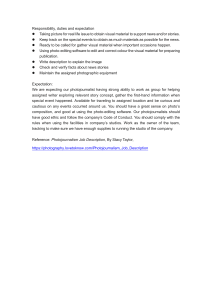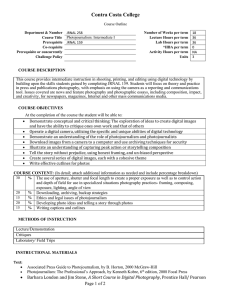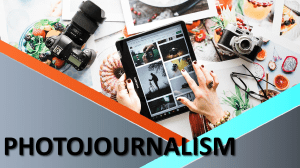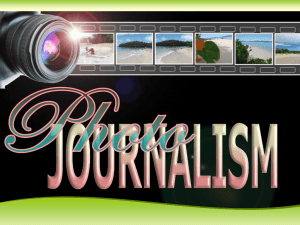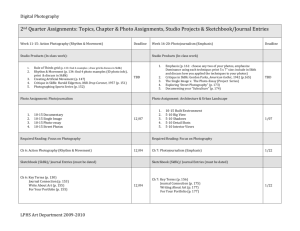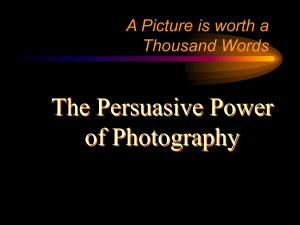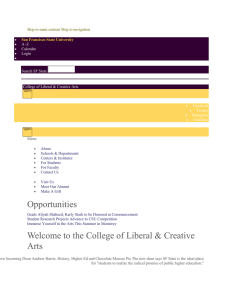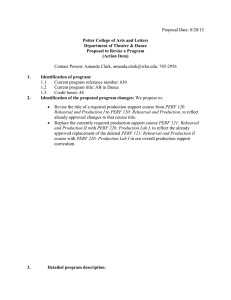Chabot College February 1994 71 - Beginning Photojournalism
advertisement
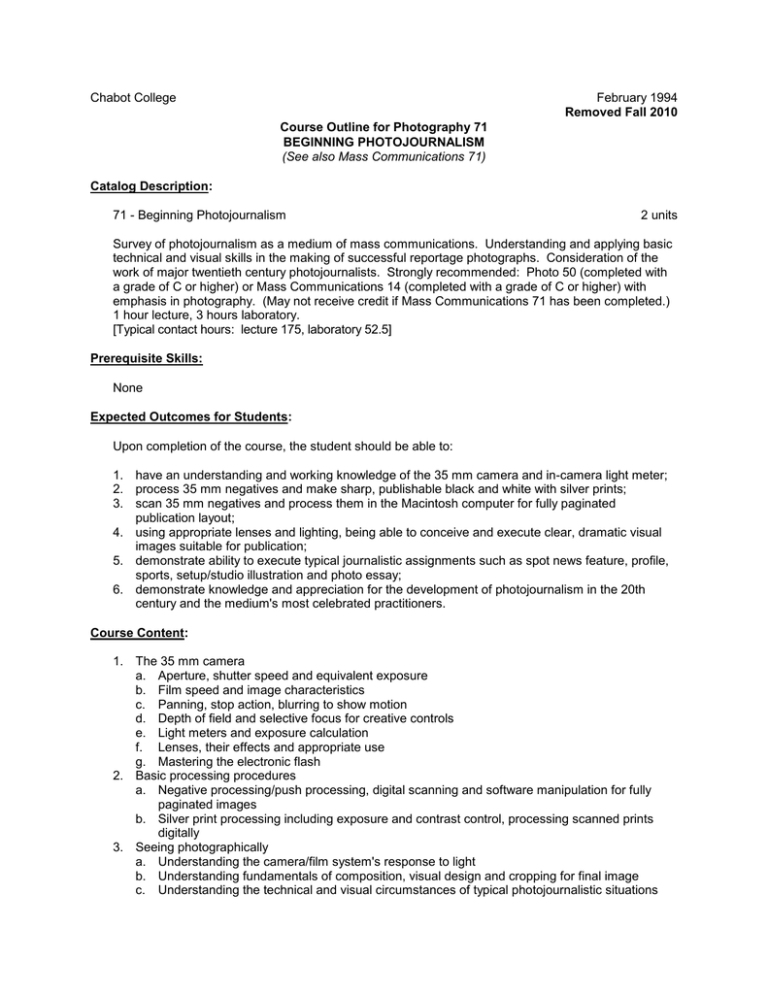
Chabot College February 1994 Removed Fall 2010 Course Outline for Photography 71 BEGINNING PHOTOJOURNALISM (See also Mass Communications 71) Catalog Description: 71 - Beginning Photojournalism 2 units Survey of photojournalism as a medium of mass communications. Understanding and applying basic technical and visual skills in the making of successful reportage photographs. Consideration of the work of major twentieth century photojournalists. Strongly recommended: Photo 50 (completed with a grade of C or higher) or Mass Communications 14 (completed with a grade of C or higher) with emphasis in photography. (May not receive credit if Mass Communications 71 has been completed.) 1 hour lecture, 3 hours laboratory. [Typical contact hours: lecture 175, laboratory 52.5] Prerequisite Skills: None Expected Outcomes for Students: Upon completion of the course, the student should be able to: 1. have an understanding and working knowledge of the 35 mm camera and in-camera light meter; 2. process 35 mm negatives and make sharp, publishable black and white with silver prints; 3. scan 35 mm negatives and process them in the Macintosh computer for fully paginated publication layout; 4. using appropriate lenses and lighting, being able to conceive and execute clear, dramatic visual images suitable for publication; 5. demonstrate ability to execute typical journalistic assignments such as spot news feature, profile, sports, setup/studio illustration and photo essay; 6. demonstrate knowledge and appreciation for the development of photojournalism in the 20th century and the medium's most celebrated practitioners. Course Content: 1. The 35 mm camera a. Aperture, shutter speed and equivalent exposure b. Film speed and image characteristics c. Panning, stop action, blurring to show motion d. Depth of field and selective focus for creative controls e. Light meters and exposure calculation f. Lenses, their effects and appropriate use g. Mastering the electronic flash 2. Basic processing procedures a. Negative processing/push processing, digital scanning and software manipulation for fully paginated images b. Silver print processing including exposure and contrast control, processing scanned prints digitally 3. Seeing photographically a. Understanding the camera/film system's response to light b. Understanding fundamentals of composition, visual design and cropping for final image c. Understanding the technical and visual circumstances of typical photojournalistic situations Chabot College Course Outline for Photography 71, Page 2 February 1993, Revised 9/29/98 4. History of 20th century photojournalism a. Early pioneers, their equipment and their work b. Major photojournalists of the 20th century c. Social impact of photojournalism as communication medium Methods of Presentation: 1. 2. 3. 4. Lecture and audio-visual materials In-class demonstration Visiting professionals Field trips Methods of Evaluating Student Progress: 1. Written examinations and quizzes 2. Graded evaluation of photo assignments completed on deadline 3. In-class participation Textbook(s) (Typical): Photojournalism, Kenneth Kobre Focal Press A Short Course in Photography, Barbara London, Harper Collins Software: Digital Darkroom, Adobe Photoshop Special Student Materials: 35 mm camera: one that accepts interchangeable lenses preferred I:P71New kh Revised: 9/29/98
